
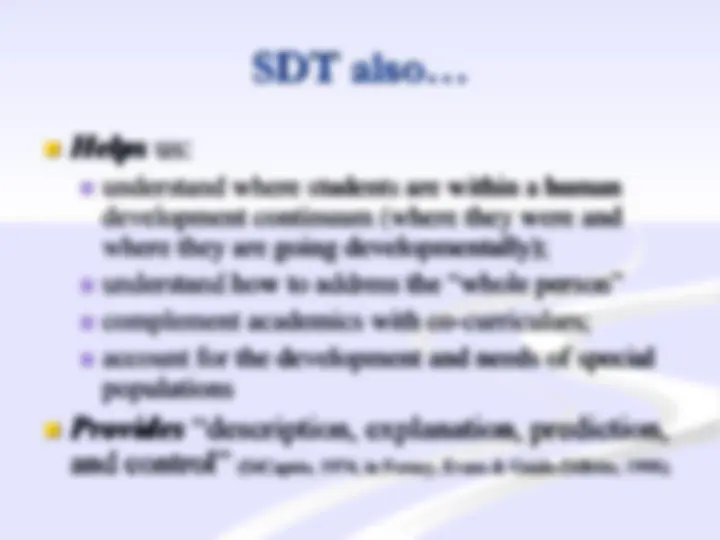
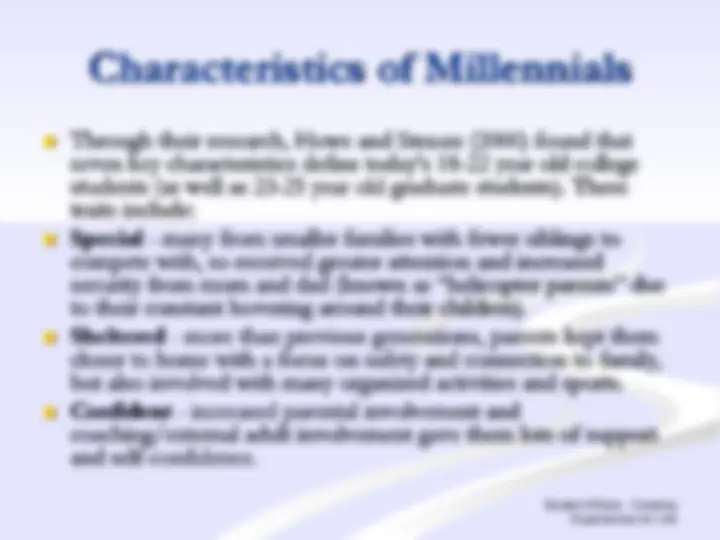
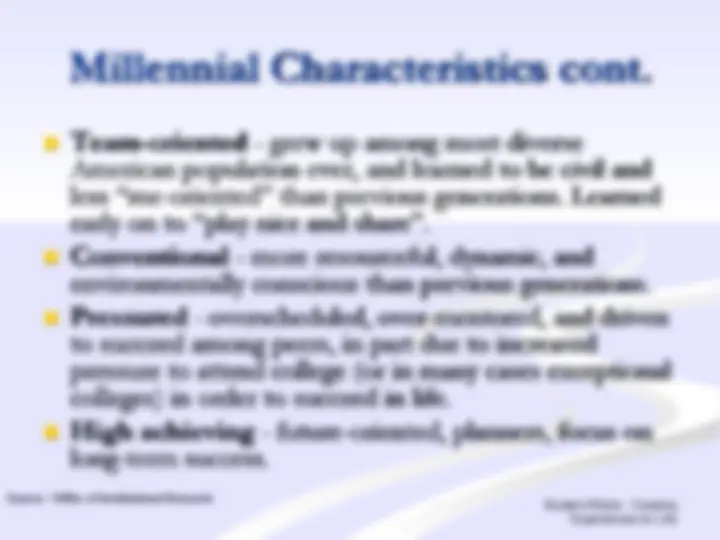
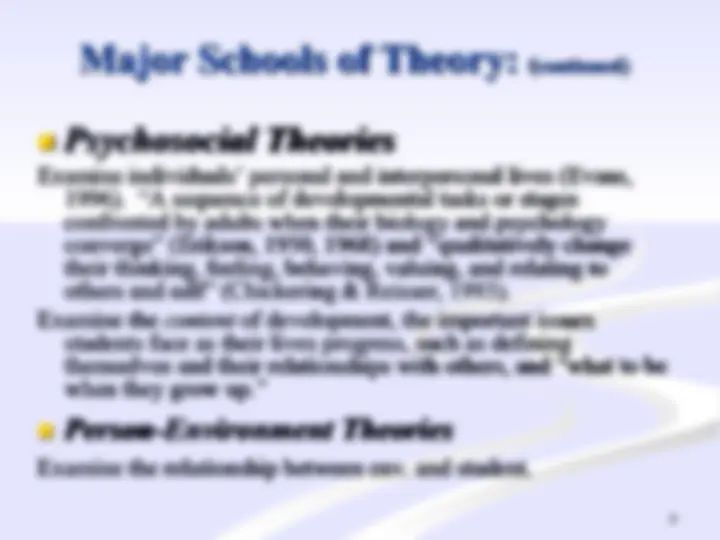
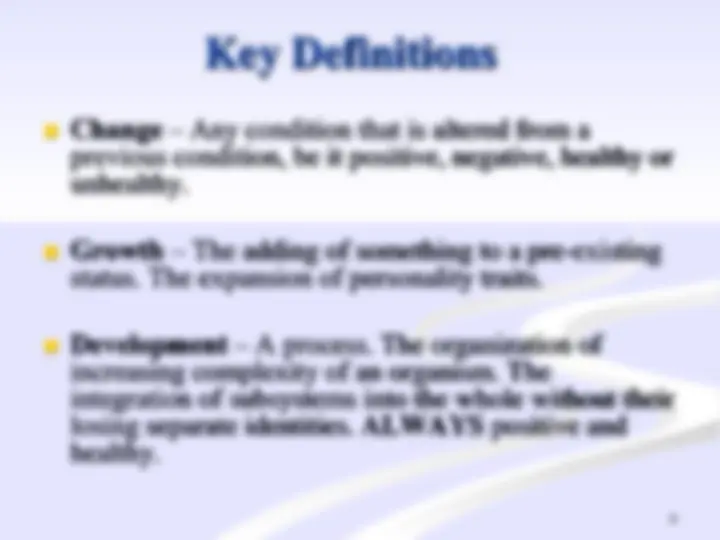
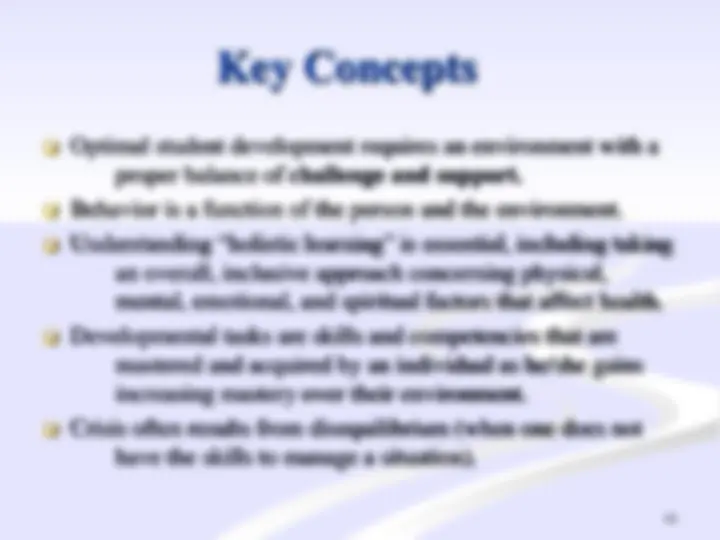
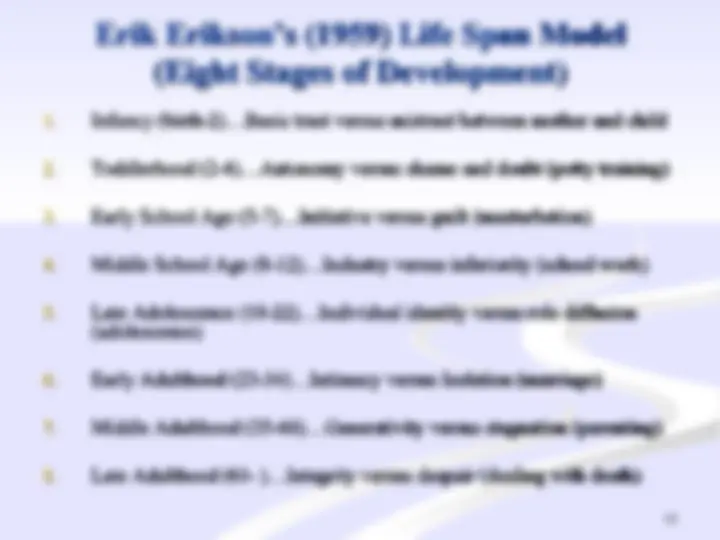
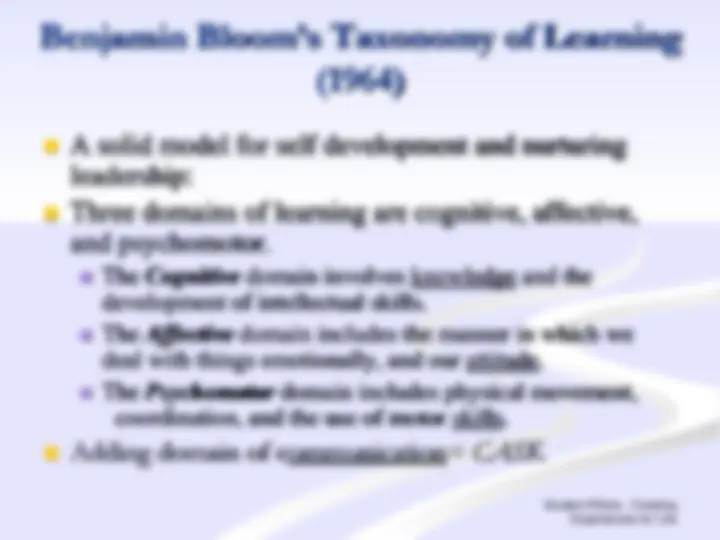
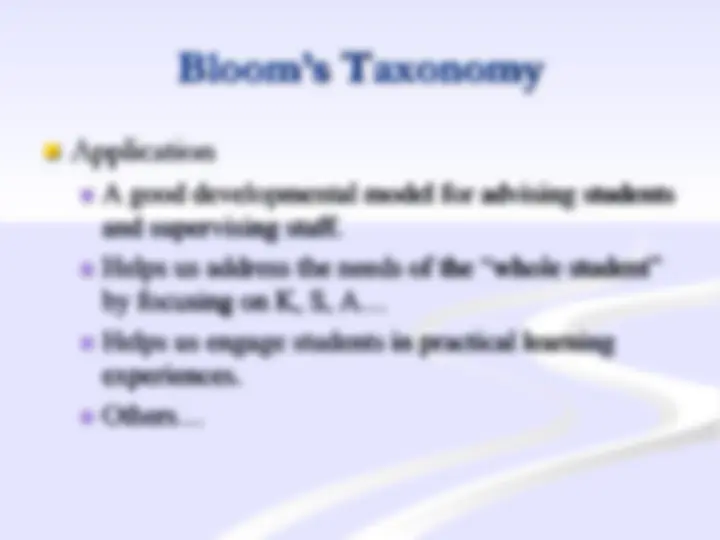
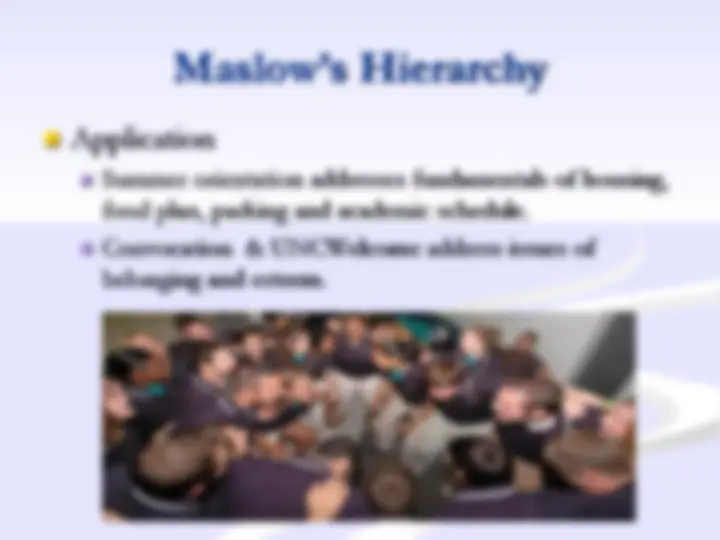
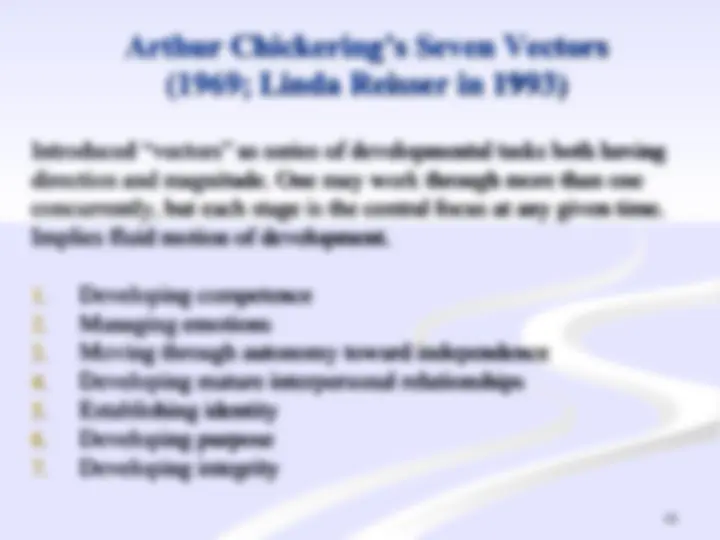
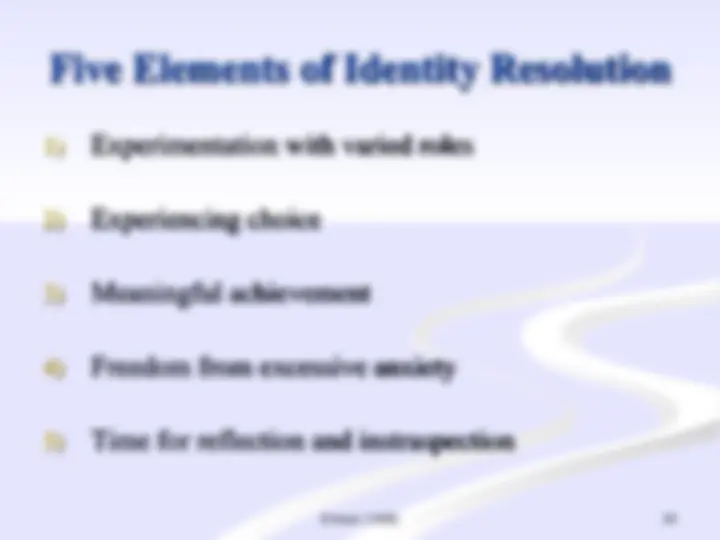
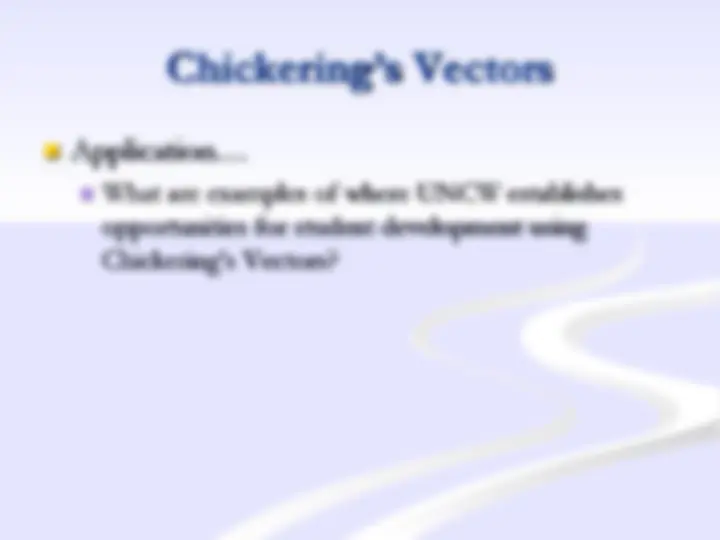
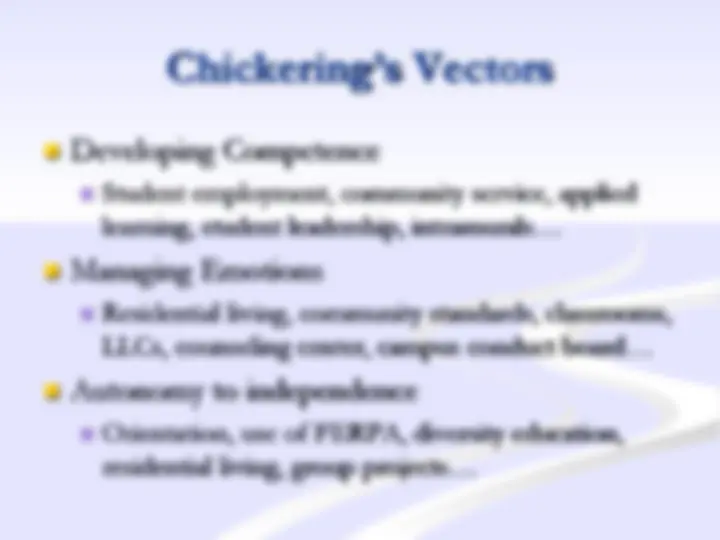
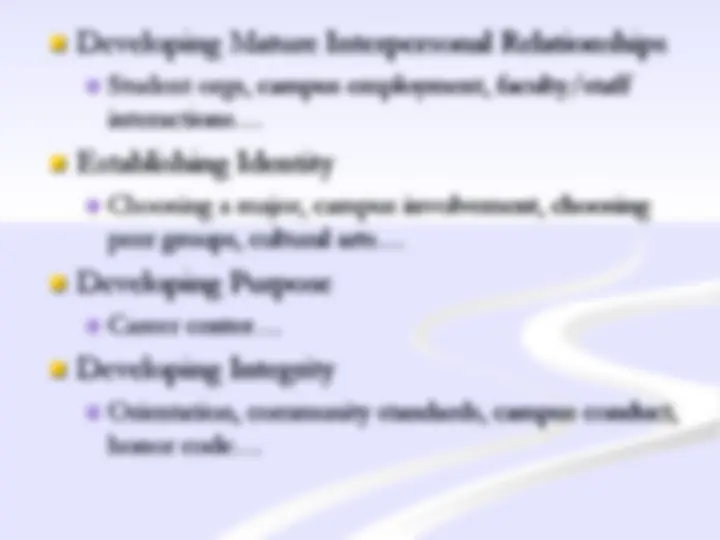
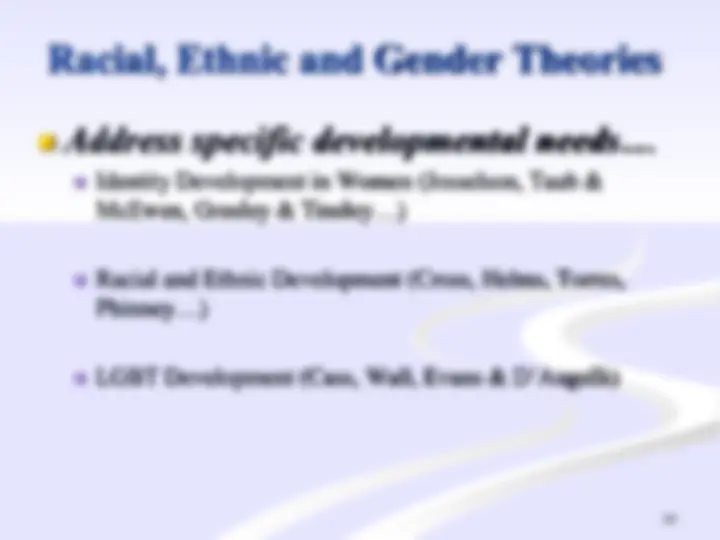
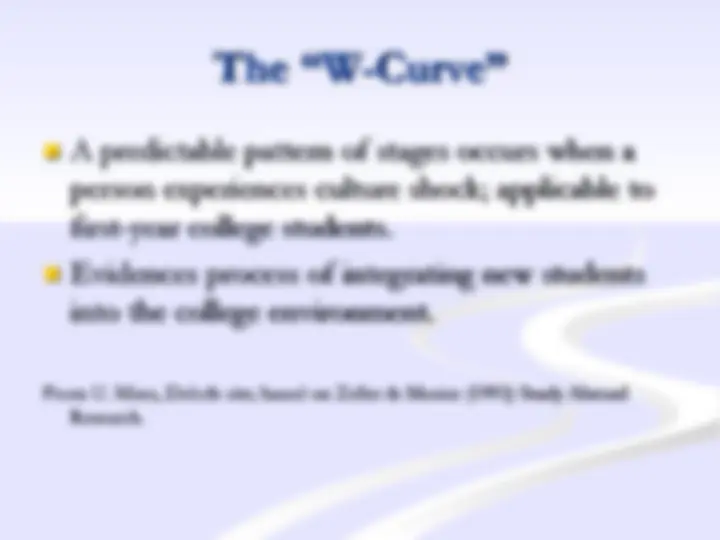
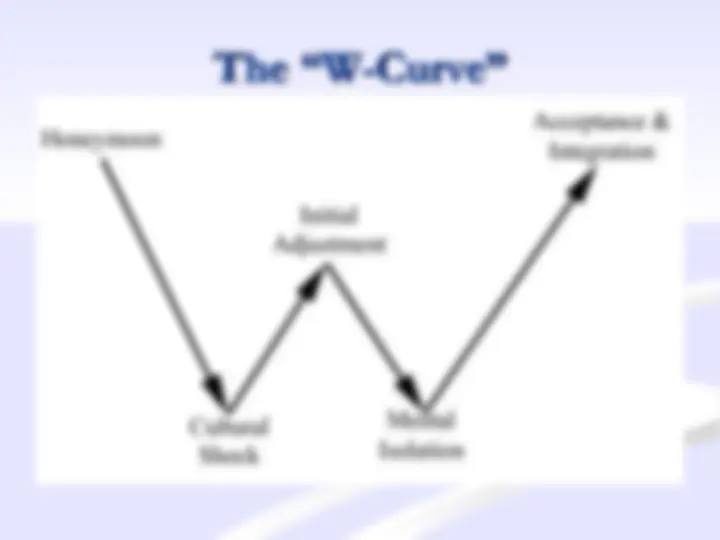
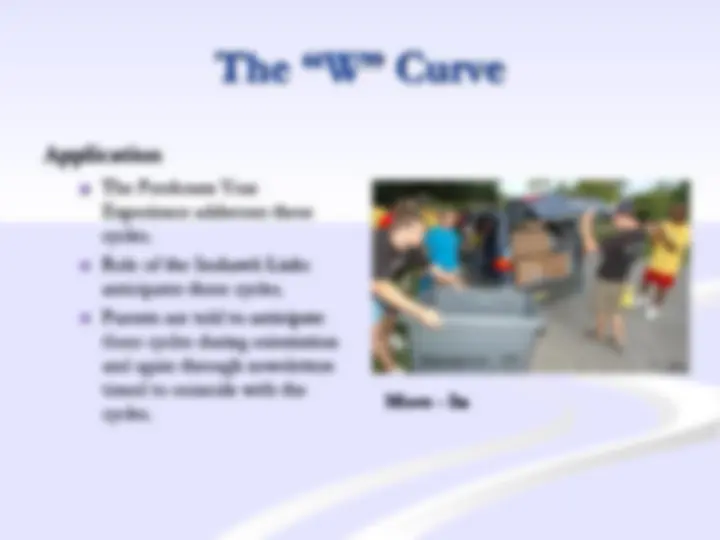
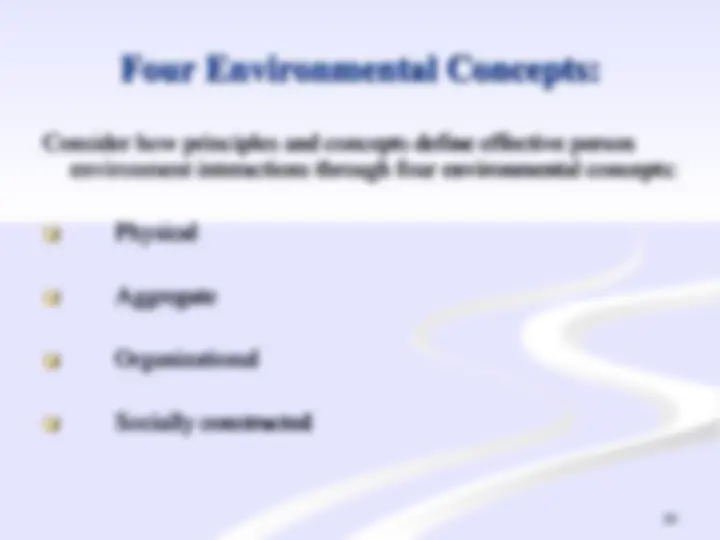
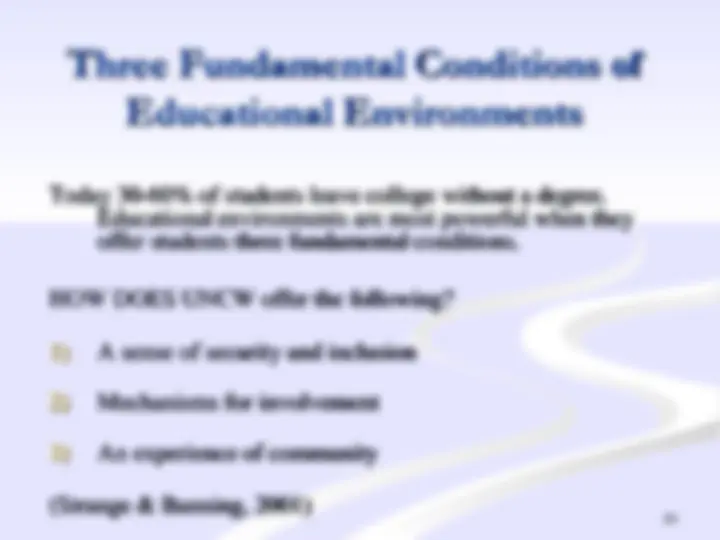
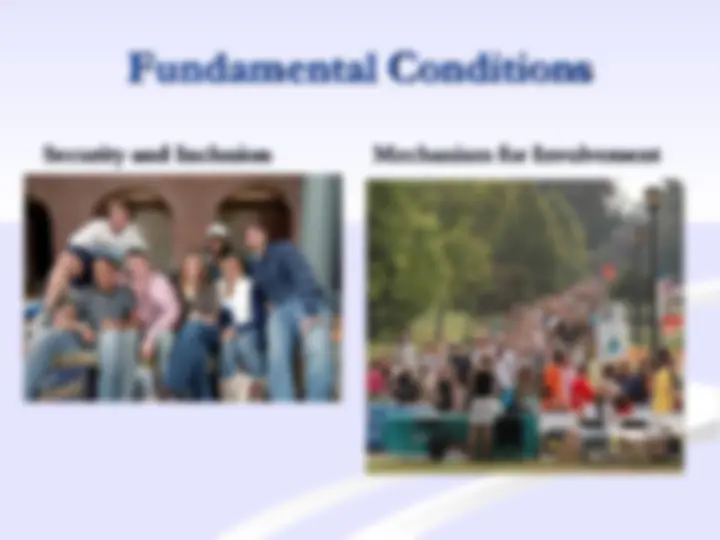
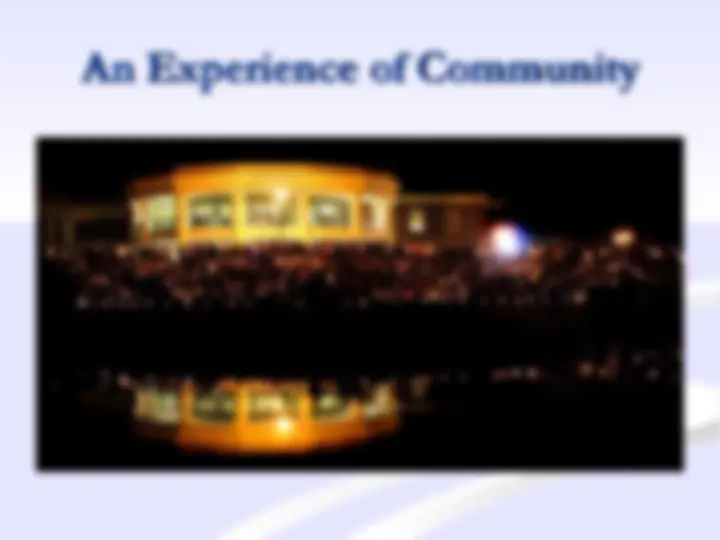
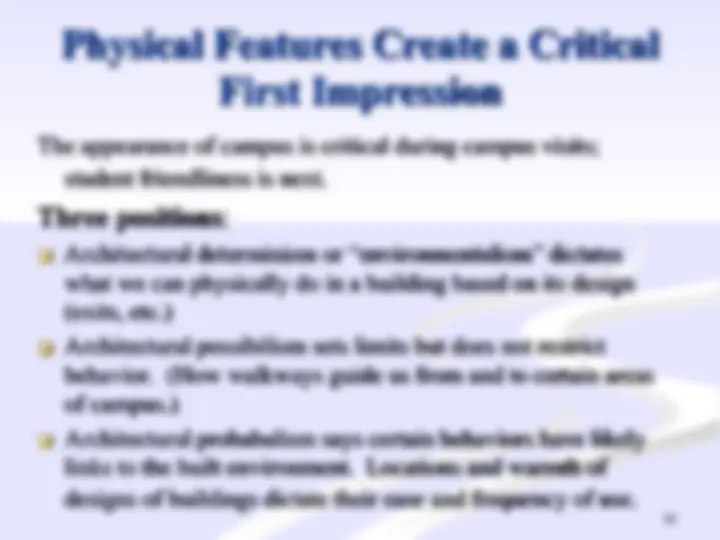
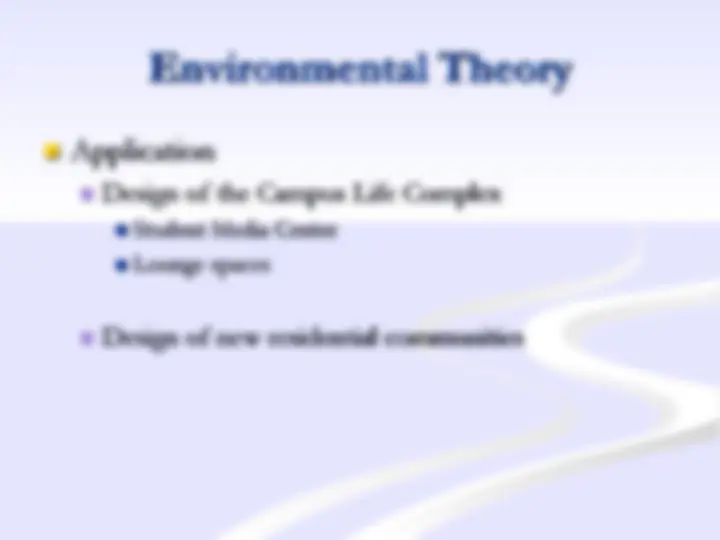

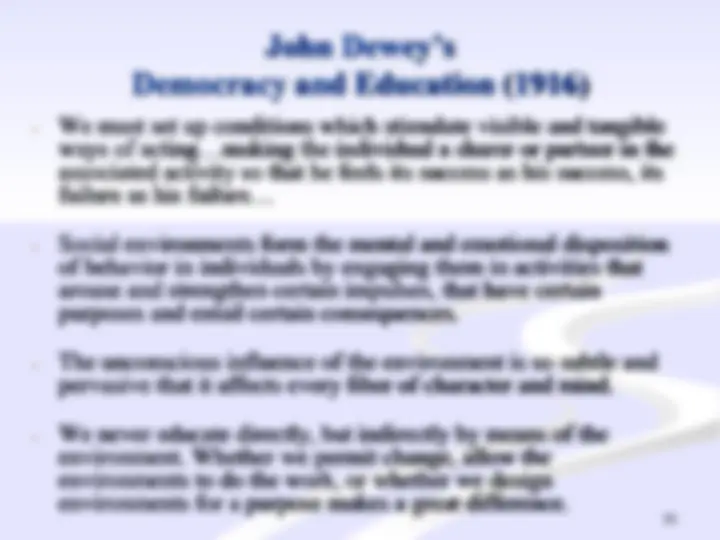
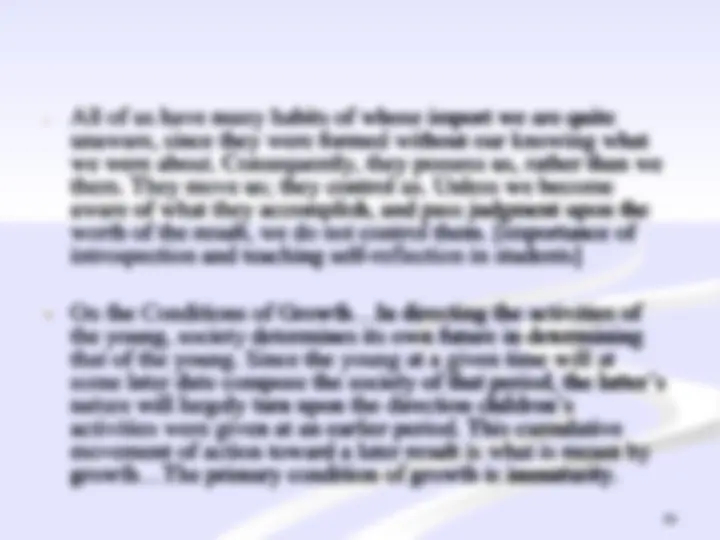
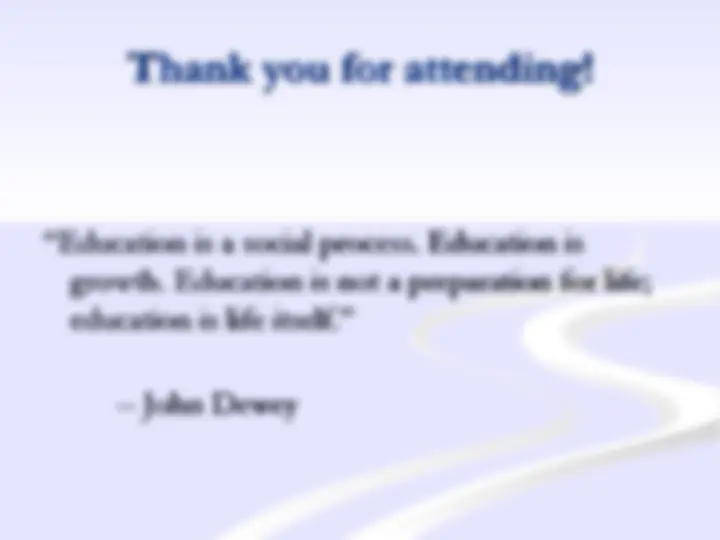


Study with the several resources on Docsity

Earn points by helping other students or get them with a premium plan


Prepare for your exams
Study with the several resources on Docsity

Earn points to download
Earn points by helping other students or get them with a premium plan
Community
Ask the community for help and clear up your study doubts
Discover the best universities in your country according to Docsity users
Free resources
Download our free guides on studying techniques, anxiety management strategies, and thesis advice from Docsity tutors
Student development theory in define basic assumption of SDT, major school theory, six sources of influence and life span model and five elements of identity resolution.
Typology: Slides
1 / 37

This page cannot be seen from the preview
Don't miss anything!






























Why is Student Development
Theory Important?
2
Justifies our profession and legitimatizes relevance of
Student Affairs Professionals
Helps us understand our
audience; talk their language
Helps us “meet students
where they are”
Teaches us how students
rationalize, behave and develop as human beings
Helps us understand opportunities and limits
Student Affairs: Creating Experiences for Life
Characteristics of Millennials
Through their research, Howe and Strauss (2000) found that seven key characteristics define today’s 18-22 year old college students (as well as 23-25 year old graduate students). These traits include:
Special - many from smaller families with fewer siblings to compete with, so received greater attention and increased security from mom and dad (known as “helicopter parents” due to their constant hovering around their children).
Sheltered - more than previous generations, parents kept them closer to home with a focus on safety and connection to family, but also involved with many organized activities and sports.
Confident - increased parental involvement and coaching/external adult involvement gave them lots of support and self-confidence.
Student Affairs: Creating Experiences for Life
Source: Office of Institutional Research
Millennial Characteristics cont.
Team-oriented - grew up among most diverse American population ever, and learned to be civil and less “me-oriented” than previous generations. Learned early on to “play nice and share”. Conventional - more resourceful, dynamic, and environmentally conscious than previous generations. Pressured - overscheduled, over-mentored, and driven to succeed among peers, in part due to increased pressure to attend college (or in many cases exceptional colleges) in order to succeed in life. High achieving - future-oriented, planners, focus on long-term success.
7
Major Schools of Theory:
Examine the development of how students grow cognitively and intellectually, including how they interpret the world around them. Examines the way people think but not what they think (Evans, 1996). [Jean Piaget, then W. Perry, L. Knefelkamp, C. King & K. Kitchener, M. Baxter Magolda, L. Kohlberg and C. Gilligan)
Typology Theories
Examine individual differences in how students view and relate to the
world (Evans, 1996). [Carl Jung, then D. Kolb, J. Holland, Myers- Briggs, Keirsey & Bates]
Learning and Adult Development Theories
Examine how non-traditional aged college students learn and develop.
[J.B. Watson, Skinner, Bandura, Maslow, Schlossberg…]
8
Major Schools of Theory: (continued)
Examine individuals’ personal and interpersonal lives (Evans, 1996). “A sequence of developmental tasks or stages confronted by adults when their biology and psychology converge” (Erikson, 1950, 1968) and “qualitatively change their thinking, feeling, behaving, valuing, and relating to others and self” (Chickering & Reisser, 1993).
Examine the content of development, the important issues students face as their lives progress, such as defining themselves and their relationships with others, and “what to be when they grow up.”
Person-Environment Theories
Examine the relationship between env. and student.
10
Key Concepts
Optimal student development requires an environment with a
proper balance of challenge and support.
Behavior is a function of the person and the environment.
Understanding “holistic learning” is essential, including taking
an overall, inclusive approach concerning physical, mental, emotional, and spiritual factors that affect health.
Developmental tasks are skills and competencies that are
mastered and acquired by an individual as he/she gains increasing mastery over their environment.
Crisis often results from disequilibrium (when one does not
have the skills to manage a situation).
(Sandeen, A. 1991) 11
Clarity and consistency of objectives Institutional size
Curriculum, teaching and evaluation Residence hall arrangements Faculty and administration
Friends, group, student culture
13
Student Affairs: Creating Experiences for Life
A solid model for self development and nurturing leadership: Three domains of learning are cognitive, affective, and psychomotor. The Cognitive domain involves knowledge and the development of intellectual skills. The Affective domain includes the manner in which we deal with things emotionally, and our attitude. The Psychomotor domain includes physical movement, coordination, and the use of motor skills. Adding domain of communication = CASK.
16
Abraham Maslow’s Hierarchy of
Needs (1954)
17
The Levels Are:
Physiological: hunger, thirst, bodily comforts, etc.;
Safety/Security: out of danger;
Belongingness and Love: affiliate with others, be accepted; and
Esteem: to achieve, be competent, gain approval and recognition.
Cognitive: to know, to understand, and explore;
Aesthetic: symmetry, order, and beauty;
Self-Actualization: to find self-fulfillment and realize one's potential; and
Transcendence: to help others find self-fulfillment and realize their potential.
19
Introduced “vectors” as series of developmental tasks both having
direction and magnitude. One may work through more than one concurrently, but each stage is the central focus at any given time.
Implies fluid motion of development.
Erikson (1959) 20
Five Elements of Identity Resolution
Experimentation with varied roles
Experiencing choice
Meaningful achievement
Freedom from excessive anxiety
Time for reflection and instraspection